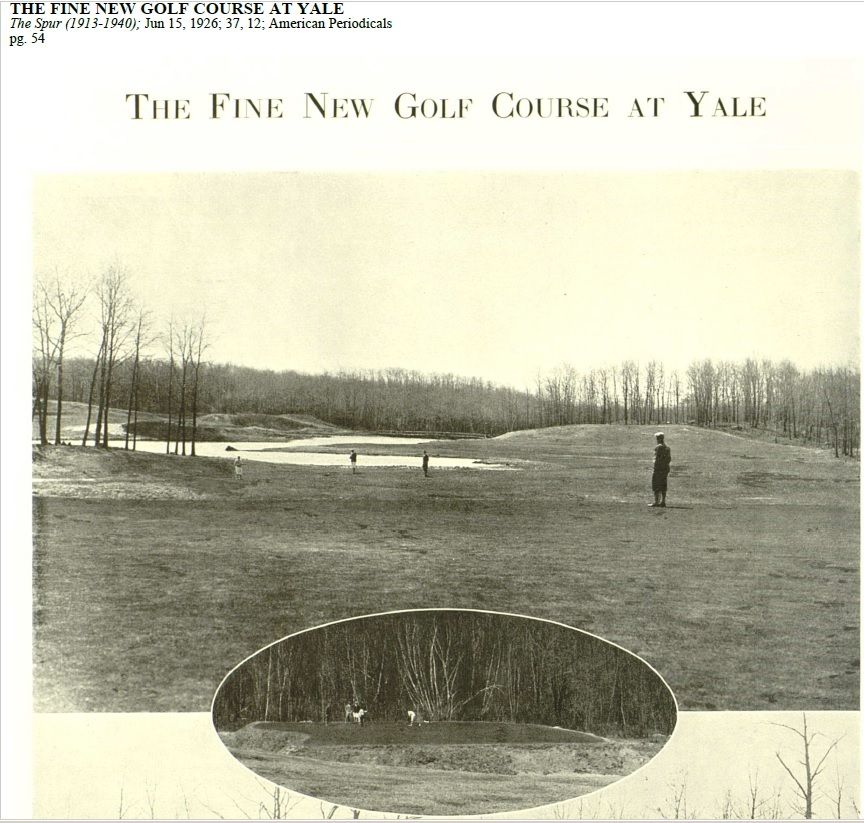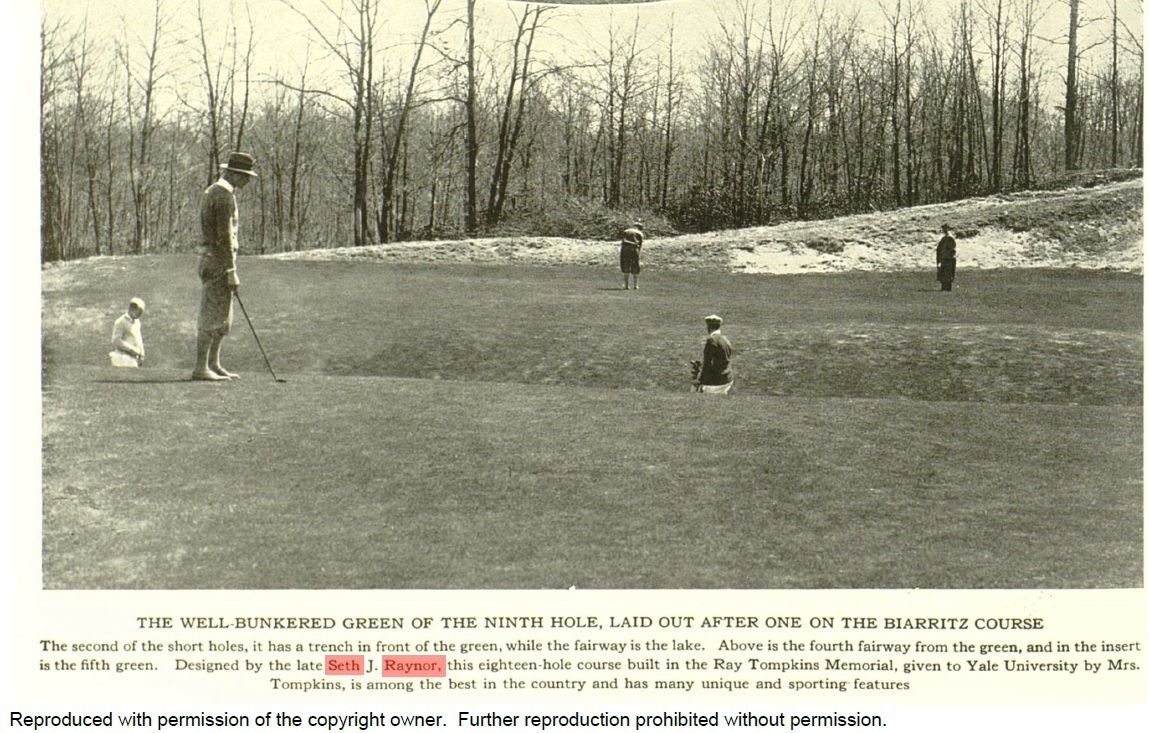Someone recently sent me the below page from the June 15, 1926 edition of the magazine
Spur, exactly two months to the day after (at least the first nine holes of) The Course at Yale officially opened. The bottom picture shows golfers on Yale's Biarritz 9th hole and comes as close as possible to definitively proving that the green not only was designed to have only one tier (with the front tier and swale serving as the "approach"), but also that it in fact played that way when the course opened before changing sometime shortly thereafter.
A man holding what appears to be a wedge, and seemingly waiting to play his shot onto the green, stands on the front tier in the foreground; another holding his (or "an," if he's a caddie) entire golf bag stands in the swale on the right, while to his left a third man, looking downward presumably in contemplation of his lie and ensuing shot, also stands in the swale; and the lone putter, possibly in the group ahead, stands on the back tier with another man to his right looking on. The grass in the swale, moreover, looks relatively shaggy, while the relative smoothness of the front tier proves only that "the approach to the hole is smoother and longer than usual," as an unnamed author wrote in the August 28, 1925 article accompanying Charles Banks's hole-by-hole descriptions in the
Yale Alumni Weekly. As for the caption, it appears to be another iteration of Banks's post- or at least during-construction description from that publication, which confirmed that the architect's intent was always for only the back tier to serve as the green.
As I learned last month, we have gone in circles on this issue numerous times over the years. In Charlie Bell's "Over the Swale at Yale Today" thread (
http://www.golfclubatlas.com/forum/index.php/topic,61893.msg1470297.html#msg1470297), I tried to summarize the various viewpoints and set forth all of the known facts and pictures supporting them. This latest picture, which, to my knowledge and based on my extensive searching, has never made its way into any of the relevant threads here on the Discussion Group, seems to tilt the scale firmly in favor of the one-tier camp.

